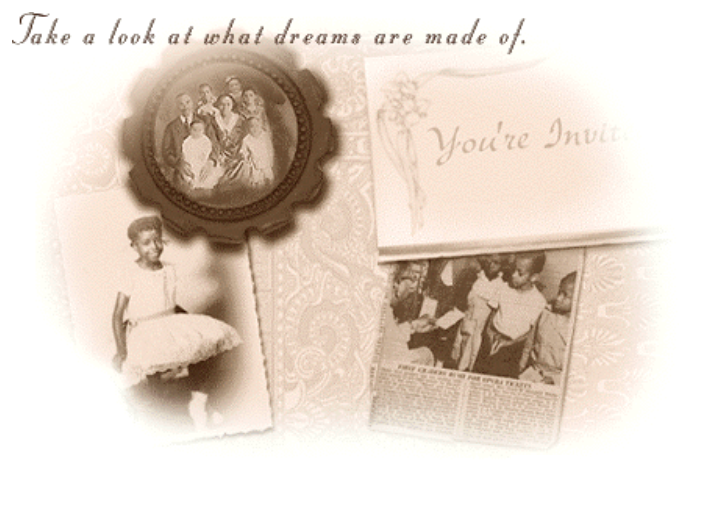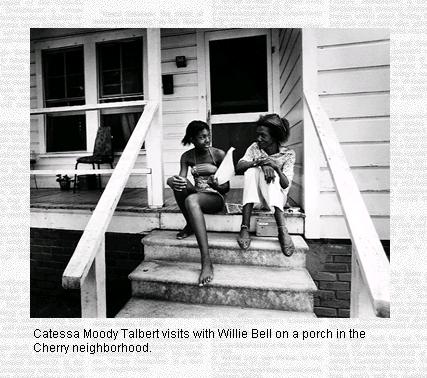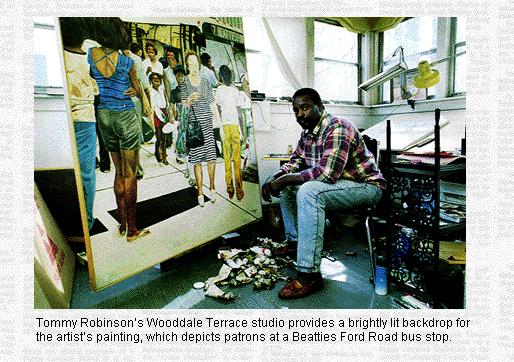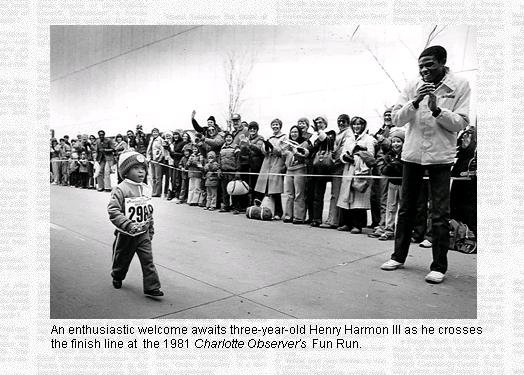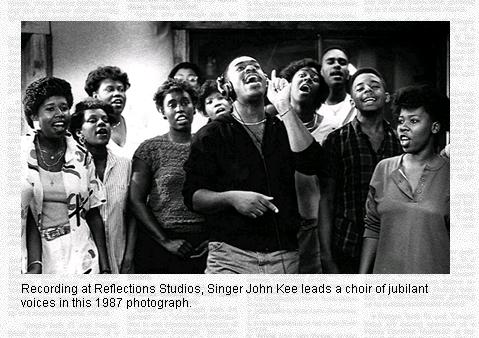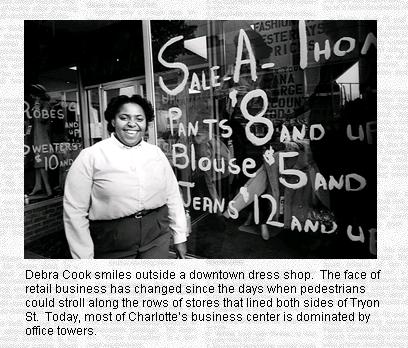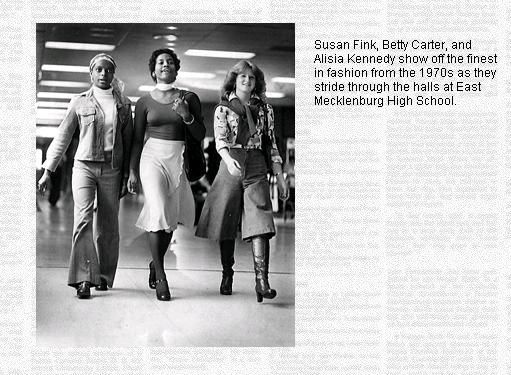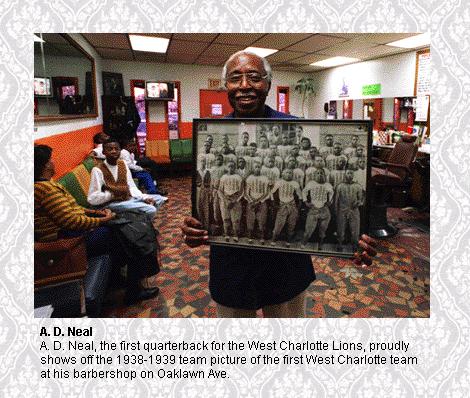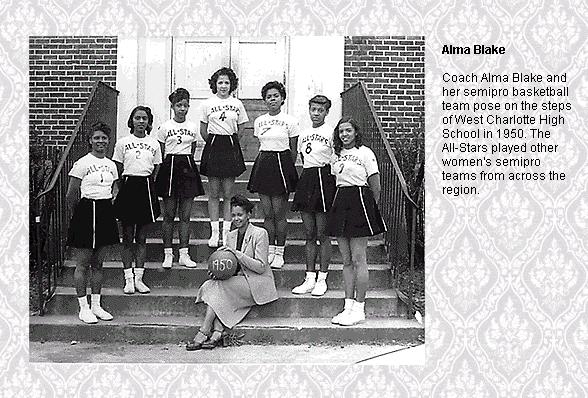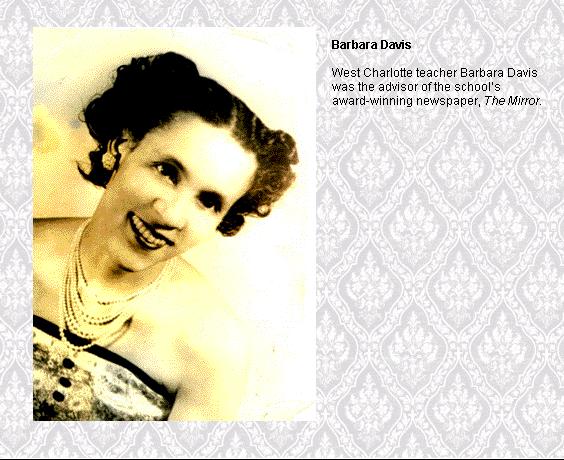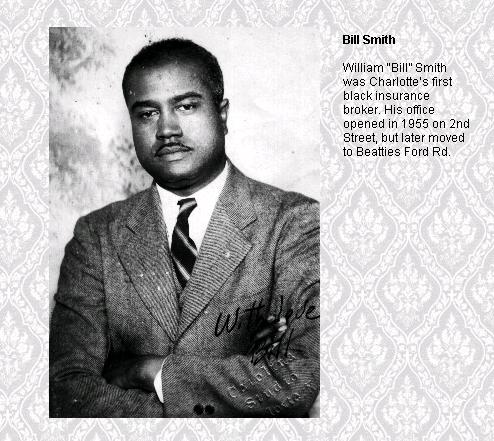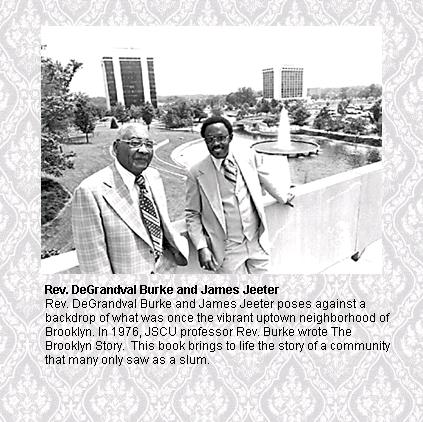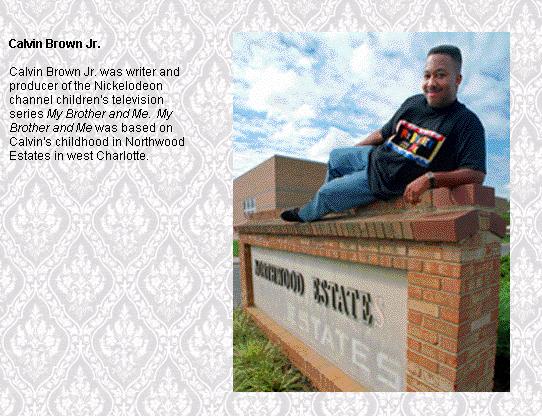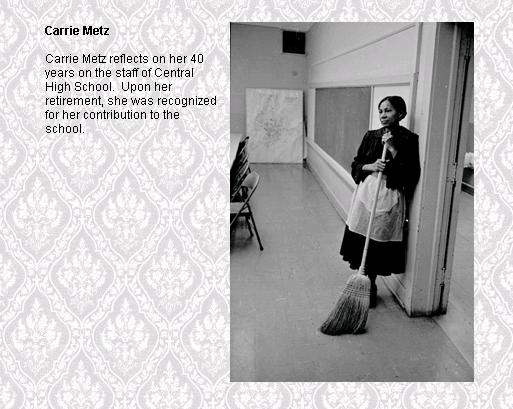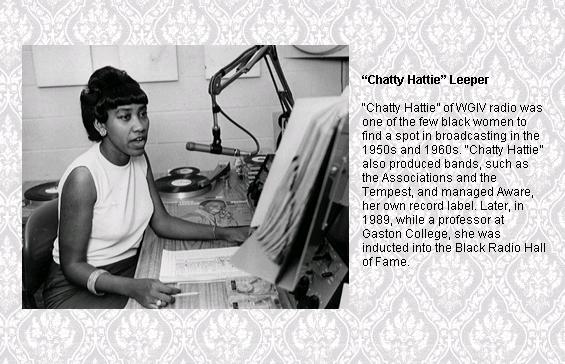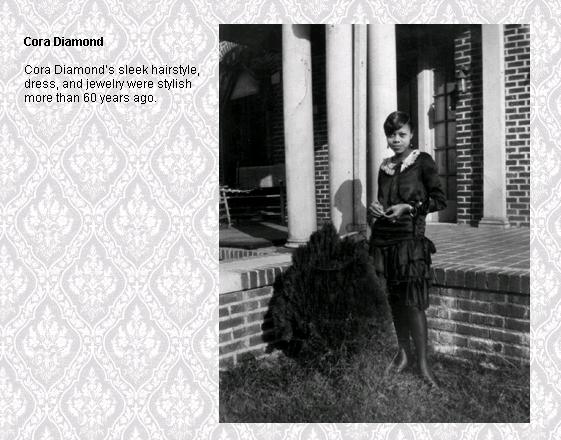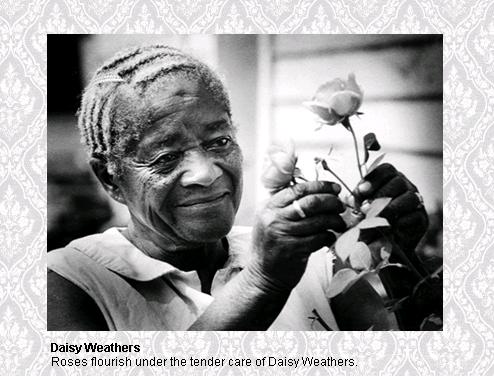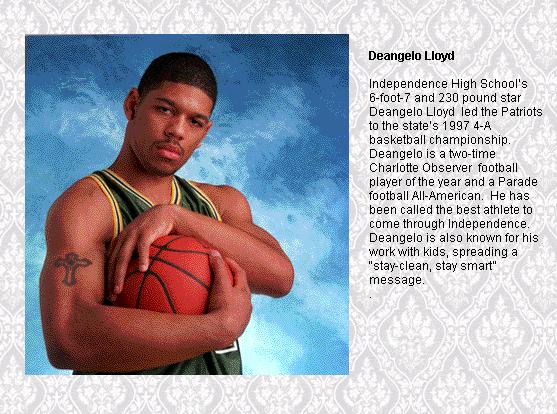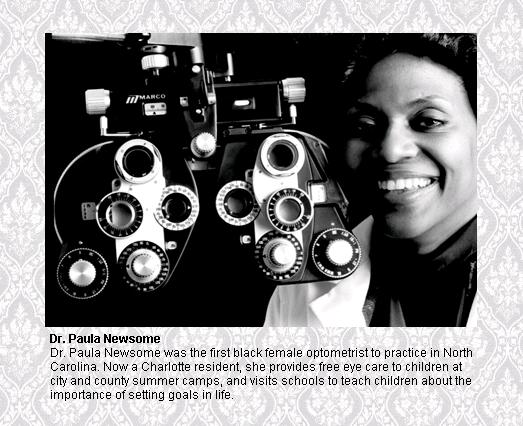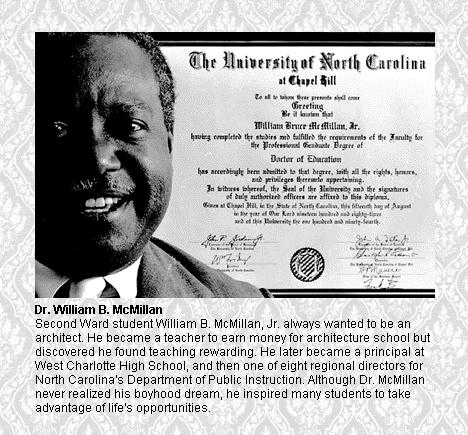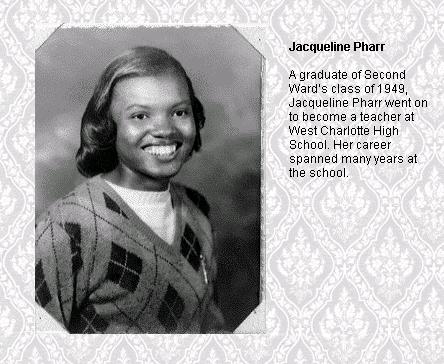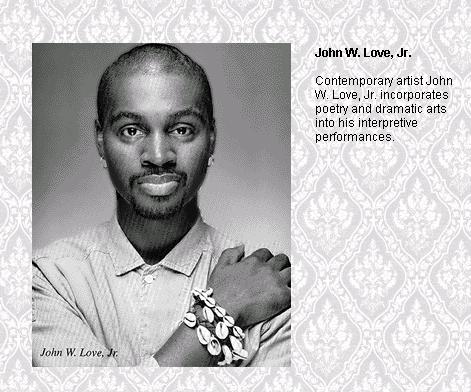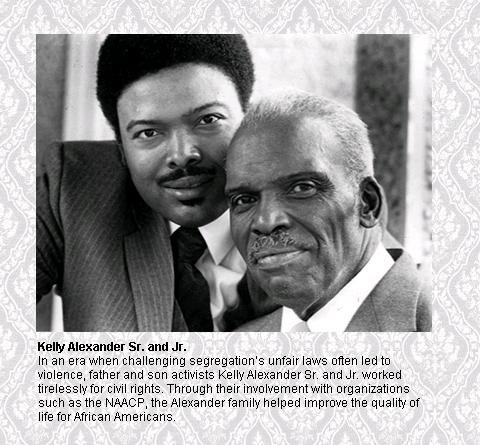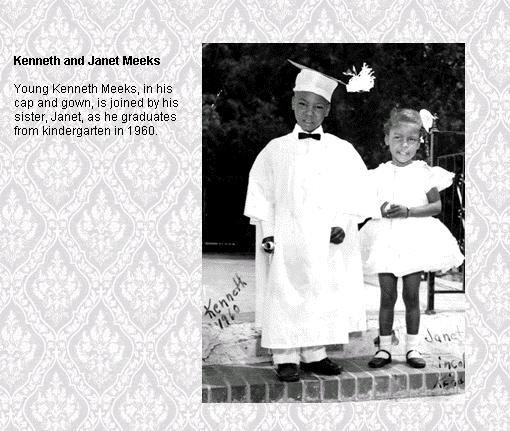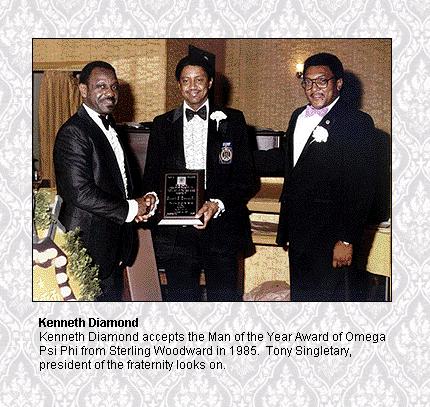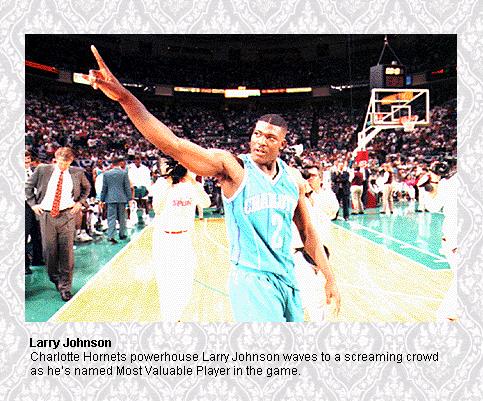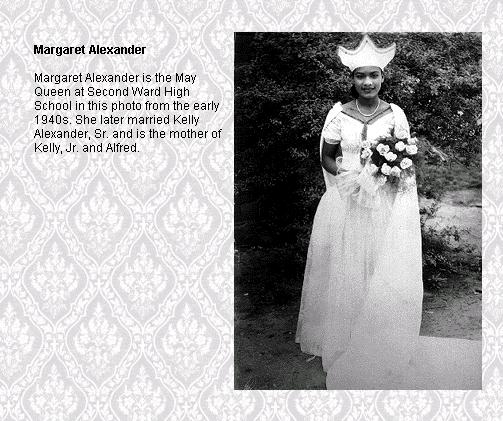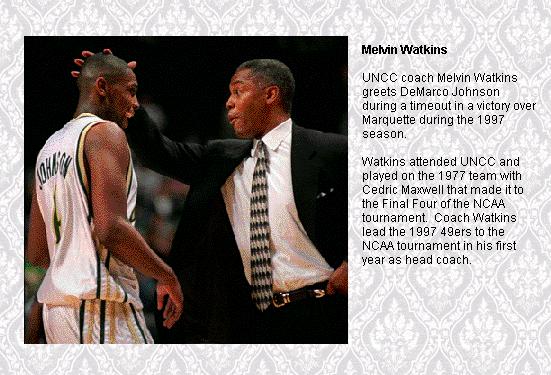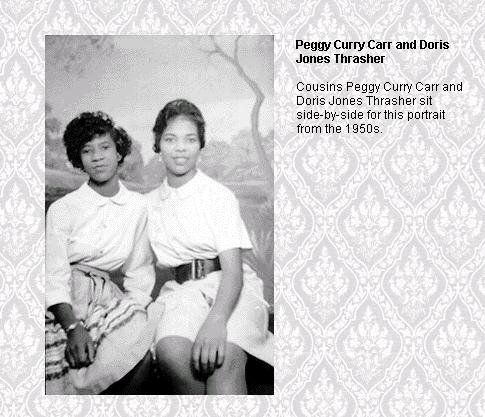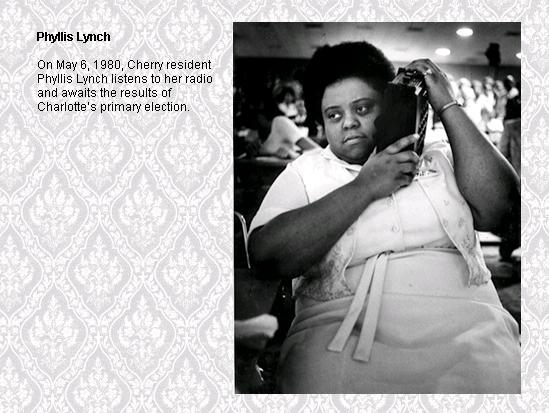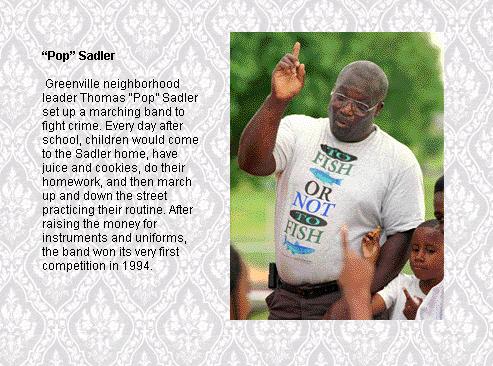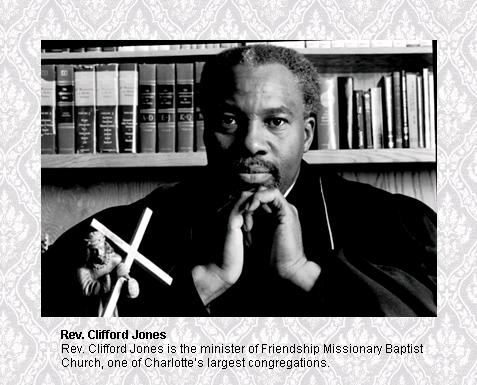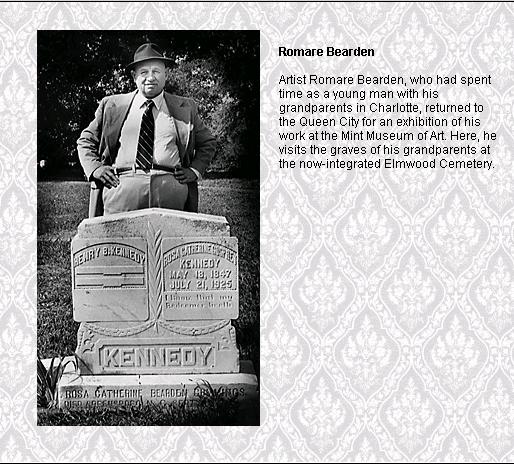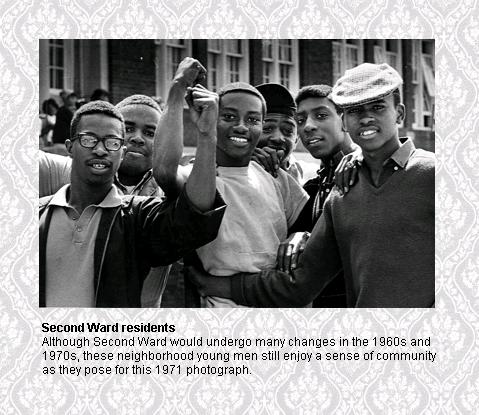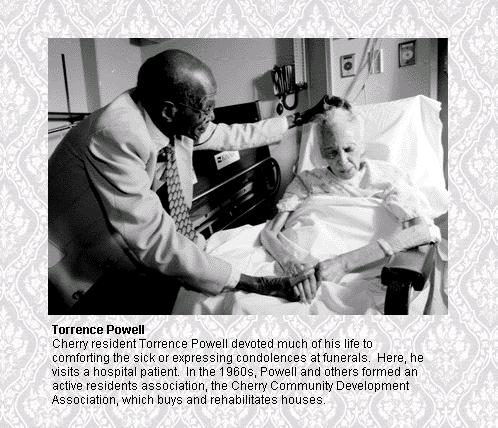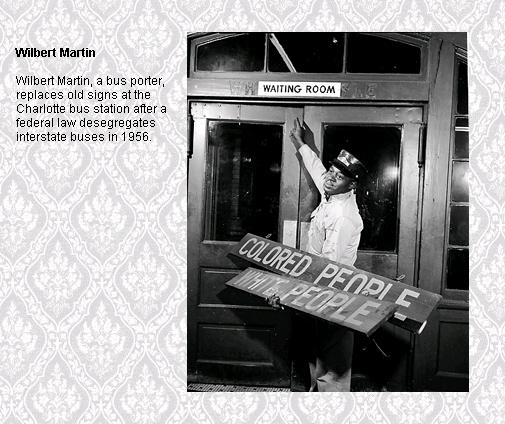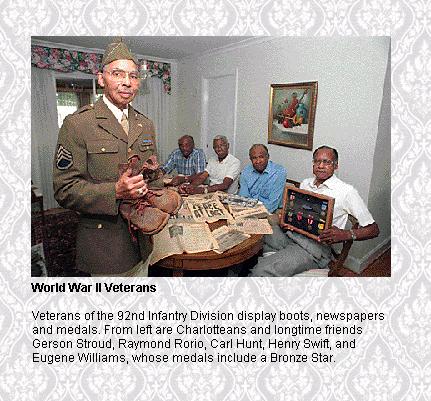Keepsakes [1]
Below is an index to four image galleries of African American life in Charlotte, North Carolina in the decades following World War II.
Part 1: Social Gatherings
- Every bridesmaid wore a strand of pearls for Elizabeth (“Libby”) and John Randolph’s wedding in 1950 [2]. Even the little flower girl wore a dress and necklace to match the bridal party.
- Willie Walker, John Black, John Chambers, and Henry Ely [3] celebrate their graduation from West Charlotte High School in 1950.
- Cannonball McClure and his band, the Sounds of Soul [4], share the bill with go-go dancers in the 1960s.
- After the end of World War II, Americans enjoyed an era of peace and prosperity. Here, members of the Merry Maker’s Club celebrate at their 1947 Christmas ball. [5]
- It was an honor to be accepted into the Daughters of Isis organization. All of the women who became members wore the traditional white dresses seen in this portrait. [6]
- Alice Haynes gives an informal piano recital [7] for her parents, Bernard and Mary Grace Haynes, in 1949.
- 1984: Members of the Bridgeteers Club gathered to commemorate the Excelsior Club’s 40th anniversary. [8] Pictured from left to right, first row: Harry Bost, Lorenzo E. Poe, Gerson L. Stroud, Zoel S. Hargraves, Johnny William, Samuel Dillard, and William H. Yongue. Second row: Spencer E. Durante, William R. Oliver, Joe Grier, and Emery L. Rann. Third row: Walter W. Twitty, Carl J. Hunt, Stanley C. Fisher, Walter G. Byers, and Edward J. High. Fourth row: Johnny Gray, William H. Swift, Joseph W. Scott, Roy Alexander, Julius L. Stroud, George W. Johnson, Daniel McLaurin, and Wirrion M. Stroud.
- Dorothy Flagg, at left, carefully arranges the veil of a bride as her bridesmaids look on [9]. Mrs. Flagg made many of the wedding gowns for brides in Charlotte’s African-American community.
- Back in the days when Coca-Cola still came in glass bottles, a few members of the Alpha Kappa Alpha sorority gather after a meeting at Dorothy Flagg’s home. [10]
- Renowned civil rights attorney Julius Chambers [11] speaks with students during a Black History Month program.
- Students graduate from McKee’s Nursery and Kindergarten on Oaklawn Avenue [12]. The school opened in the 1960s and served the families of Charlotte’s westside (sic) community.
- In the days of segregation, the wives of Charlotte’s black doctors and dentists formed their own Medical Auxiliary chapter [13]. In this portrait from the late 40s are, seated from left to right: Gladys Carter, Dorothy Wilkins, Ethel Williams, Bennie Lee, Joneatha Isler, Gladys Greene, Maria Wynn, and Lucielle Tyson. Standing are: Louise Clift, Louise Watkins, Mrs. McAlpine, Alma Rimmer, Bessie Baucom, Ruby Martin, Ella Alston, Gertrude Blackman, Bobby Alexander, and Mildred Brodie Aldridge.
- The ladies of the “Moles” Club celebrate the 40th anniversary of the Excelsior Club [14]. The husbands of the “moles” were known as “mules”. Pictured here (in alphabetical order) are: Diane Alexander, Laura Bell, Laura Booten, Johnnie Bullock, Thelma Colston, Mabel Dillard, Naomi High, Esther Hill, Mary Hughes, Gwendalyn James, Millie M. McFadden, Gladys Moreland, Alma Motley, Addie Moore, Claudette Murphy, Bertha Perry, Pennie Perry, Roberta Thompkins, Barbara Warren, Jean Webber, Shirley Wilkins, Vivian Williams, and Carolyn Wyche.
- Christmas celebration at St. Michael’s and All Angels Church in Third Ward [15]. Rose Leary Love, at far right, wrote about the church in her memoir, Plum Thickets and Field Daisies. St. Michael’s and All Angels Church was torn down during urban renewal. The church moved first to Davidson St. and then to Hovis Rd.
- Every wedding is an occasion for celebration, and Charlotte’s black community spared no effort in sharing a young couple’s joy. Dorothy Flagg made the wedding gown for the Oliphant/Herron wedding. [16]
- Dinner jackets and evening dresses were the fashion for students attending the 1950 senior prom at West Charlotte High [17].
- Members of the Swank Social Club [18] pose on the dance floor. (See text of Charlotte Observer 11/21/94 article [19] on the club’s 60th anniversary.)
- Geraldine Powe (center) introduces John Kiser (left) to Joe Martin at McDonald’s Cafeteria on Beatties Ford Road. [20] Martin encouraged Charlotteans to have lunch with people of different races. Powe was inspired by Martin’s challenge and invited Kiser to join her and her friends for lunch on March 13, 1997.
- The Greenville Combined Youth Organization Marching Corps entertains visitors at the United Way Resource Fair at University Memorial Baptist Church. [21] The Greenville CYOMC is a neighborhood marching band set up by Pop and Marie Sadler to keep children in school and off the streets.
Part 2: Stroud’s family portraits [22]
The recollections of Gerson Stroud and Daisy Spears Stroud are transcribed on each page and illustrated with photographs.
- Daisy and Gerson Stroud [23]
- Growing Up in Charlotte [24]
- My Father, Mr. A. E. Spears [25]
- Mr. Spears and My Friend, John [26]
- Our Wedding [27]
- My War Experiences [28]
- Home and Work [29]
- Our Community [30]
Part 3: Photos of everyday people
- Roses flourish under the tender care of Daisy Weathers [31].
- William “Bill” Smith was Charlotte’s first black insurance broker. [32] His office opened in 1955 on 2nd Street, but later moved to Beatties Ford Road.
- A. D. Neal, the first quarterback for the West Charlotte Lions, proudly shows off the 1938-1939 team picture [33] of the first West Charlotte team at his barbershop on Oaklawn Ave.
- Contemporary artist John W. Love, Jr. [34] incorporates poetry and dramatic arts into his interpretive performances.
- In an era when challenging segregation’s unfair laws often led to violence, father and son activists Kelly Alexander Sr. and Jr. [35] worked tirelessly for civil rights. Through their involvement with organizations such as the NAACP, the Alexander family helped improve the quality of life for African Americans.
- Carrie Metz reflects on her 40 years on the staff of Central High School [36]. Upon her retirement, she was recognized for her contribution to the school.
- On May 6, 1980, Cherry resident Phyllis Lynch listens to her radio [37] and awaits the results of Charlotte’s primary election.
- A graduate of Second Ward’s class of 1949, Jacqueline Pharr [38] went on to become a teacher at West Charlotte High School. Her career spanned many years at the school.
- Kenneth Diamond [39] accepts the Man of the Year Award of Omega Psi Phi from Sterling Woodward in 1985. Tony Singletary, president of the fraternity, looks on.
- Artist Romare Bearden [40], who had spent time as a young man with his grandparents in Charlotte, returned to the Queen City for an exhibition of his work at the Mint Museum of Art. Here, he visits the graves of his grandparents at the now-integrated Elmwood Cemetery.
- Coach Alma Blake and her semipro basketball team [41] pose on the steps of West Charlotte High School in 1950. The All-Stars played other women’s semipro teams from across the region.
- UNCC coach Melvin Watkins [42] greets DeMarco Johnson during a timeout in a victory over Marquette during the 1997 season. Watkins attended UNCC and played on the 1977 team with Cedric Maxwell that made it to the Final Four of the NCAA tournament. Coach Watkins led the 1997 49ers to the NCAA tournament in his first year as head coach.
- Dr. Paula Newsome [43] was the first black female optometrist to practice in North Carolina. Now a Charlotte resident, she provides free eye care to children at city and county summer camps, and visits schools to teach children about the importance of setting goals in life.
- West Charlotte teacher Barbara Davis [44] was the advisor of the school’s award-winning newspaper, The Mirror.
- Rev. Clifford Jones [45] is the minister of Friendship Missionary Baptist Church, one of Charlotte’s largest congregations.
- Cora Diamond’s [46] sleek hairstyle, dress, and jewelry were stylish more than 60 years ago.
- Although Second Ward would undergo many changes in the 1960s and 1970s, these neighborhood young men [47] still enjoy a sense of community as they pose for this 1971 photograph.
- Charlotte Hornets powerhouse Larry Johnson [48] waves to a screaming crowd as he’s named Most Valuable Player in the game.
- Wilbert Martin [49], a bus porter, replaces old signs at the Charlotte bus station after a federal law desegregates interstate buses in 1956.
- Young Kenneth Meeks, in his cap and gown, is joined by his sister, Janet [50], as he graduates from kindergarten in 1960.
- Cherry resident Torrence Powell [51] devoted much of his life to comforting the sick or expressing condolences at funerals. Here, he visits a hospital patient. In the 1960s, Powell and others formed an active residents association, the Cherry Community Development Association, which buys and rehabilitates houses.
- Margaret Alexander [52] is the May Queen at Second Ward High School in this photo from the early 1940s. She later married Kelly Alexander Sr. and is the mother of Kelly Jr. and Alfred.
- Second Ward student William B. McMillan, Jr. [53] always wanted to be an architect. He became a teacher to earn money for architecture school but discovered he found teaching rewarding. He later became a principal at West Charlotte High School, and then one of eight regional directors for North Carolina’s Department of Public Instruction. Although Dr. McMillan never realized his boyhood dream, he inspired many students to take advantage of life’s opportunities.
- Cousins Peggy Curry Carr and Doris Jones Thrasher [54] sit side-by-side for this portrait from the 1950s.
- Rev. DeGrandval Burke and James Jeeter [55] pose against a backdrop of what was once the vibrant uptown neighborhood of Brooklyn. In 1976 JCSU professor Rev. Burke wrote The Brooklyn Story. This book brings to life the story of a community that many only saw as a slum.
- Independence High School’s 6’7” and 230-pound star Deangelo Lloyd [56] led the Patriots to the state’s 1997 4-A basketball championship. Deangelo is a two-time Charlotte Observer football player of the year and a Parade football All-American. He has been called the best athlete to come through Independence. Deangelo is also known for his work with kids, spreading a “stay clean, stay smart” message.
- “Chatty Hattie” [57] of WGIV radio was one of the few black women to find a spot in broadcasting in the 1950s and 1960s. Hattie also produced bands, such as the Associations and the Tempest, and managed her own record label, Aware. In 1989, while a professor at Gaston College, she was inducted into the Black Radio Hall of Fame.
- Greenville neighborhood leader Thomas “Pop” Sadler [58] set up a marching band to fight crime. Every day after school, children would come to the Sadler home, have juice and cookies, do their homework, and then march up and down the street practicing their routine. After raising the money for instruments and uniforms, the band won its very first competition in 1994.
- Veterans of the 92nd Infantry Division [59] display boots, newspapers, and medals. From left are Charlotteans and longtime friends Gerson Stroud, Raymond Rorio, Carl Hunt, Henry Swift, and Eugene Williams, whose medals include a Bronze Star.
- Calvin Brown Jr [60]. was writer and producer of the Nickelodeon children’s TV series My Brother and Me. My Brother and Me was based on Calvin’s childhood in Northwood Estates in west Charlotte.
Part 4: Community Life
- Charlotte Hornets Larry Johnson, Dell Curry, and Alonzo Mourning [61] celebrate the team’s win in a 1993 playoff game.
- In the disco era of the 1970s, wide neckties were a popular fashion accessory. Walter Tillman checks his reflection and adjusts his tie. [62]
- Martin Luther King, Jr.’s voice filled the gymnasium on the JCSU campus [63]. His address was the highlight of the university’s 1967 centennial celebration.
- Nevord Morris holds his sleeping granddaughter, [64] six-month-old Michelle Morris, during a service at University Park Baptist Church.
- In the late 1970s, many black Americans became interested in learning more about their African heritage, partly due to the success of the Roots TV miniseries based on the work of author Alex Haley. In this 1979 photograph, Karen Moss, Sharee Thomas, and Hedona Todd join Khadijah Abdullah (second from left) to display their African costumes [65].
- First-time students ride the bus [66] to a new preschool program designed for four-year-olds.
- Gregory Harris, age eight, [67] adjusts his robe in the choir room at Antioch Baptist Church on Old Monroe Rd.
- Under the watchful eye of Jesse Campbell, [68] seedlings germinate in a greenhouse at Myers Park High School.
- As two fellow Parks and Recreation Department workers assist, Robert Mitchell removes a hanging basket of flowers [69] from atop a lamppost in downtown Charlotte.
- Kids at Freedom Park enjoy a storytelling festival as Brendalyn Jones reads aloud [70].
- Catessa Moody Talbert visits with Willie Bell [12] on a porch in the Cherry neighborhood.
- In a quiet moment, a young girl peers out from her home [13] at Piedmont Courts and contemplates the world beyond her window.
- Sharing a relaxed moment at Johnson C. Smith University are classmates William Harris III and Deborah Gates [14].
- Tommy Robinson’s Wooddale Terrace studio [15] provides a brightly-lit backdrop for this painting, which depicts patrons at a Beatties Ford Road bus stop.
- An enthusiastic welcome awaits three-year-old Henry Harmon III [16] as he crosses the finish line at the 1981 Charlotte Observer Fun Run.
- Recording at Reflections Studios, singer John Kee leads a choir of jubilant voices [17] in this 1987 photograph.
- Debra Cook smiles outside a downtown dress shop. [18] The face of retail business has changed since the days when pedestrians could stroll along the rows of stores that lined both sides of Tryon St. Today, most of Charlotte’s business center is dominated by office towers.
- Susan Fink, Betty Carter, and Alisia Kennedy [20] show off the finest in fashion from the 1970s as they stride through the halls at East Mecklenburg High School.
- Surrounded by her loving family, Nancy Harrison is named Mother of the Year [71]. Of her 22 musically talented children, the best known are sons Wilbert Harrison, who wrote the hit song “Kansas City,” and Zeb Harrison, music director of the United House of Prayer on Beatties Ford Rd.
- Tonya Davis and Eric Crawford sport sun visors [72] as the Devonshire students participate in a summer program.
